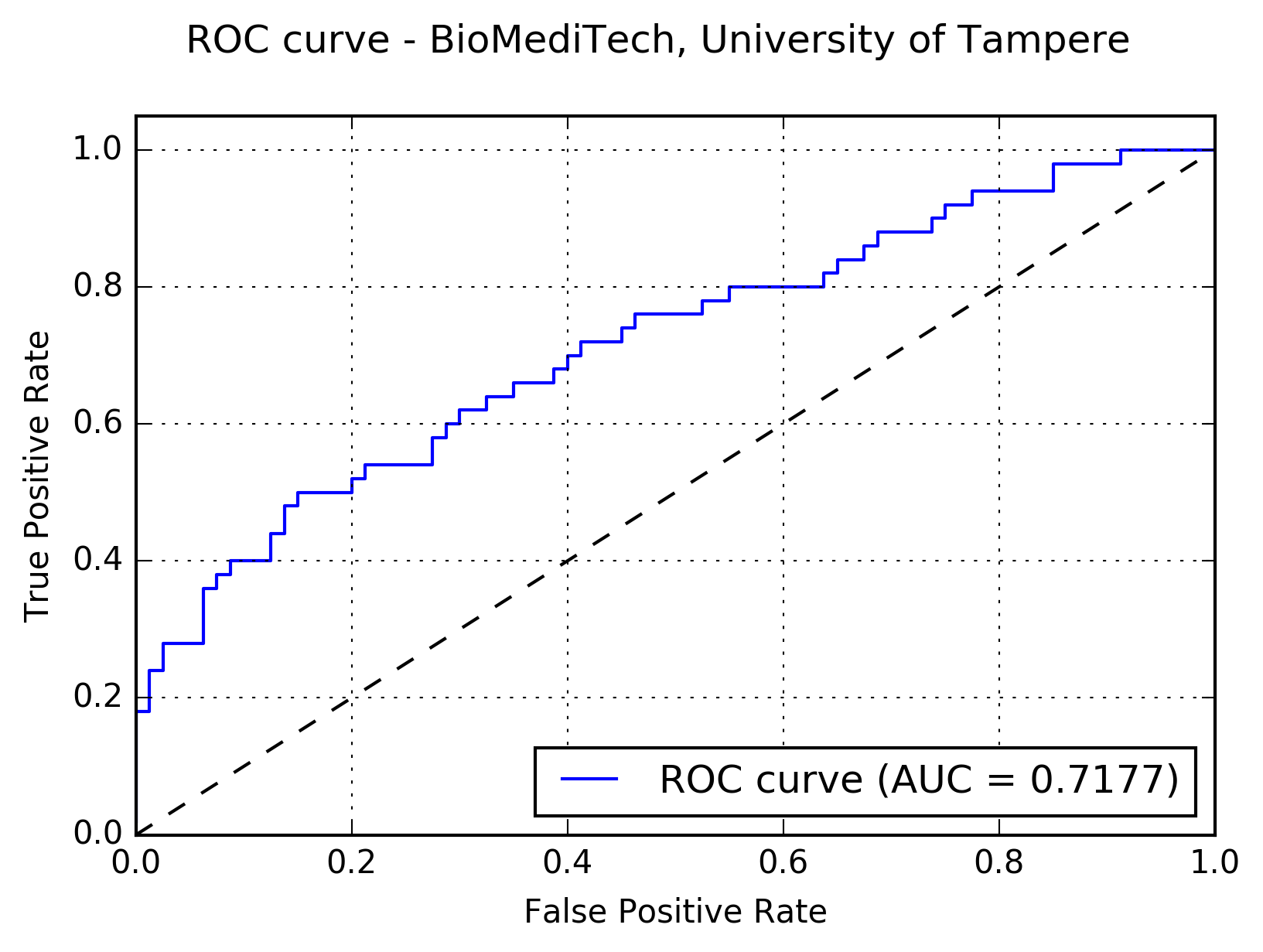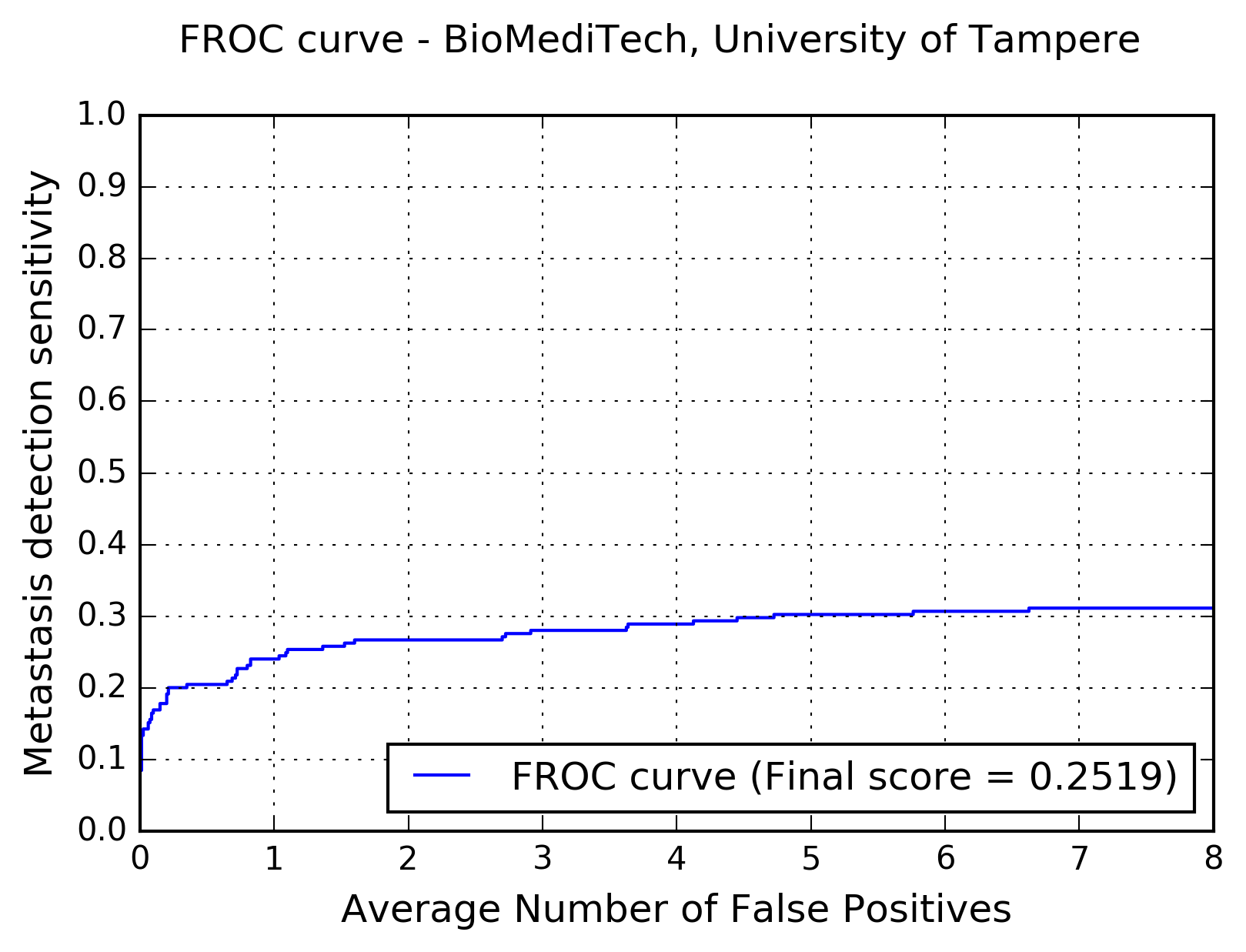BioMediTech, University of Tampere, Finland
Authors:Kaisa Liimatainen, Kimmo Kartasalo, Mira Valkonen, Leena Latonen, Pekka Ruusuvuori
Abstract:We used Keras module in Python (https://github.com/fchollet/keras) for building a basic sequential convolutional network. For network training, the images were downsampled with the factor of 16. Input images were 32 x 32 x 3 pixels in size with all three color channels, covering area of 124 µm x 124 µm. Training samples with tumor coverage of 80 percent at minimum were used for the positive (tumor) class, while healthy tissue samples had to have at least 50 percent tissue and less than 10 percent tumor. Our convolutional network consisted of two-dimensional convolutional layers followed by either a zero-padding or a max pooling layer, with two fully connected layers in the end of the net. The neural net was trained for 20 epochs in total with a batch size of 16 samples. All the training data was used for either training or validation. The confidence values returned by the classifier were further processed using morphological operations and thresholded into binary detections. Distance from the boundaries of the detected area was used as a criterion for coordinate selection within the detected areas.
Results:The following figure shows the receiver operating characteristic (ROC) curve of the method.

The following figure shows the free-response receiver operating characteristic (FROC) curve of the method.

The table below presents the average sensitivity of the developed system at 6 predefined false positive rates: 1/4, 1/2, 1, 2, 4, and 8 FPs per whole slide image.
| FPs/WSI | 1/4 | 1/2 | 1 | 2 | 4 | 8 |
| Sensitivity | 0.200 | 0.204 | 0.240 | 0.267 | 0.289 | 0.311 |
